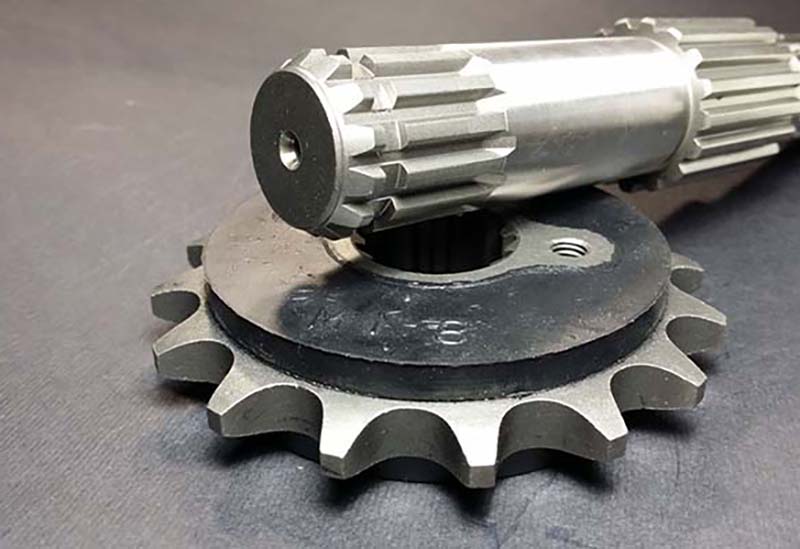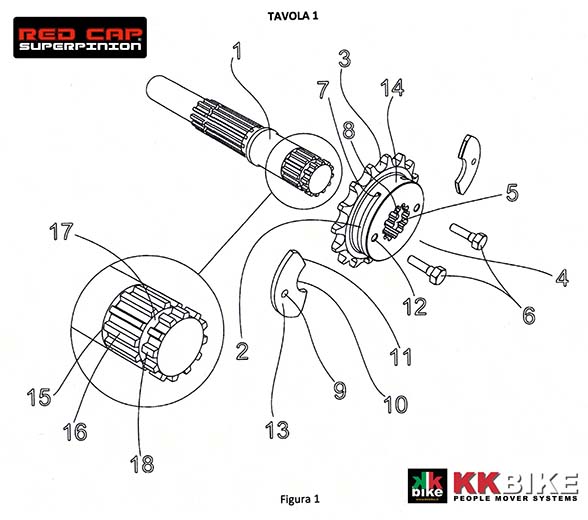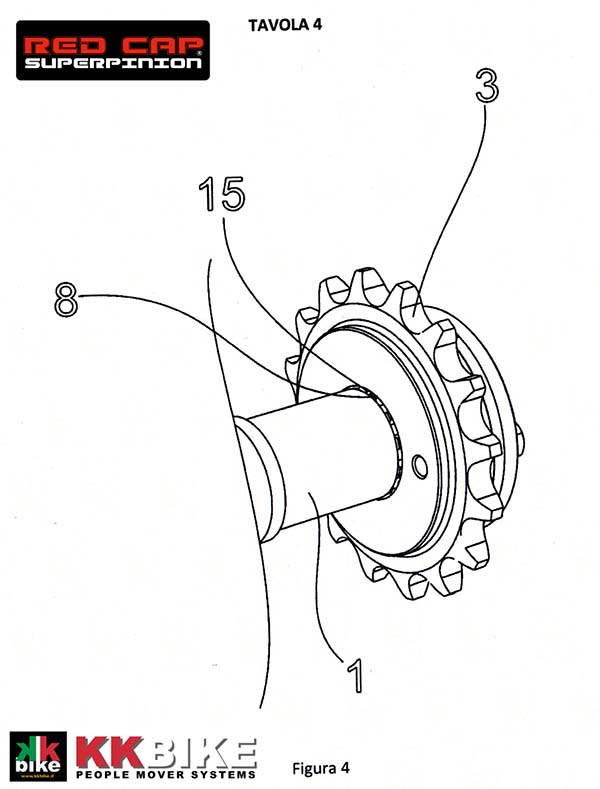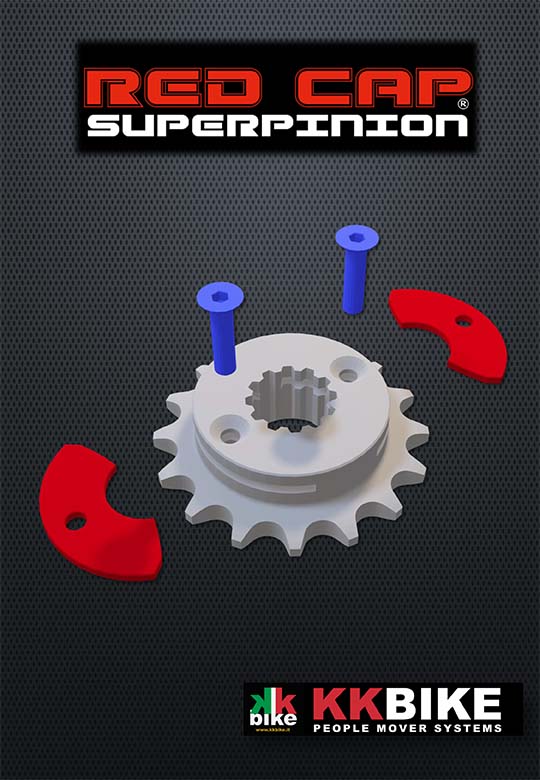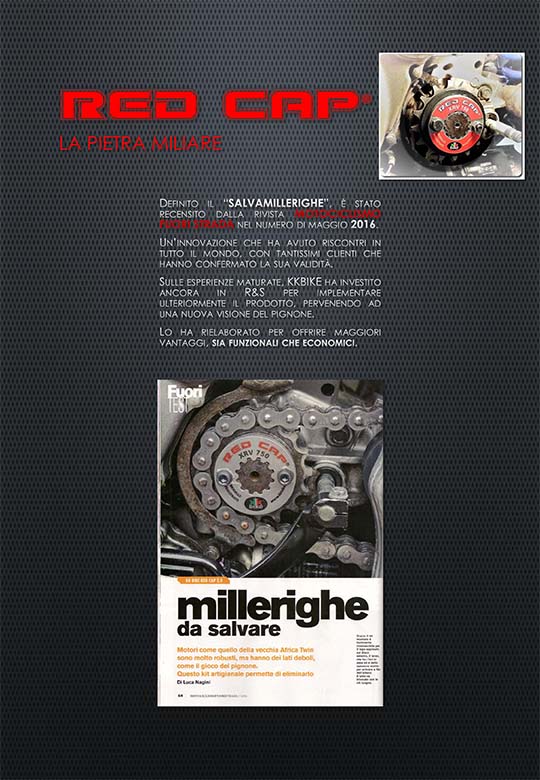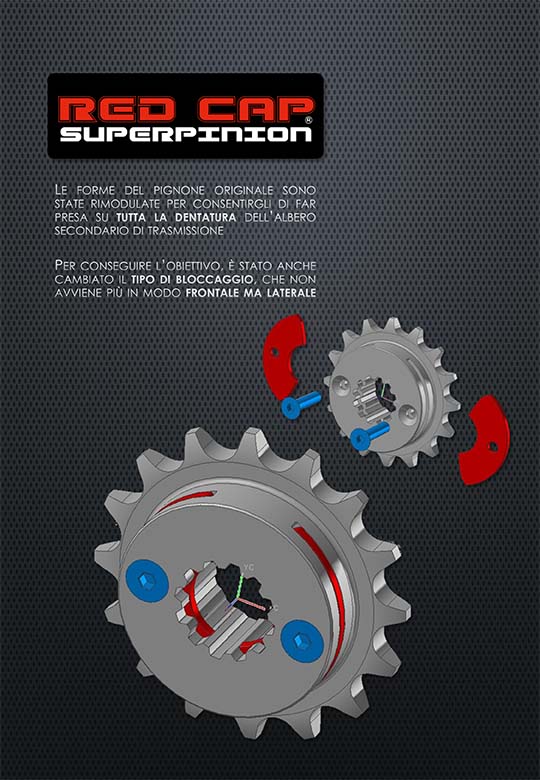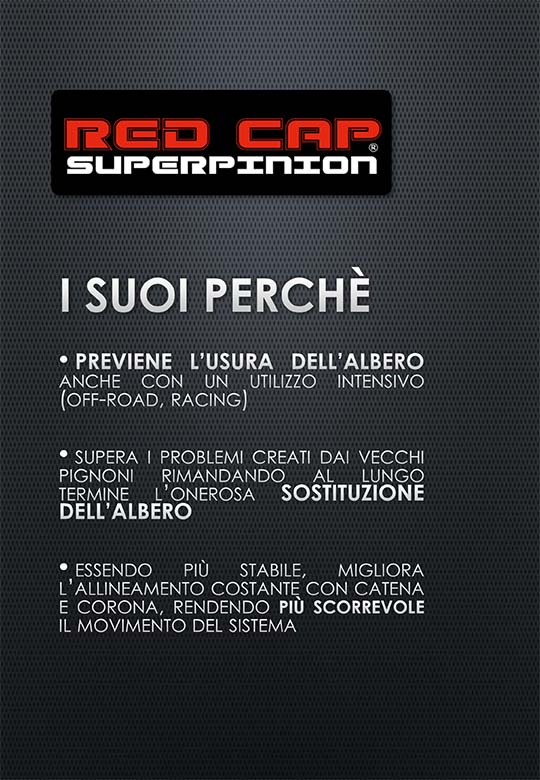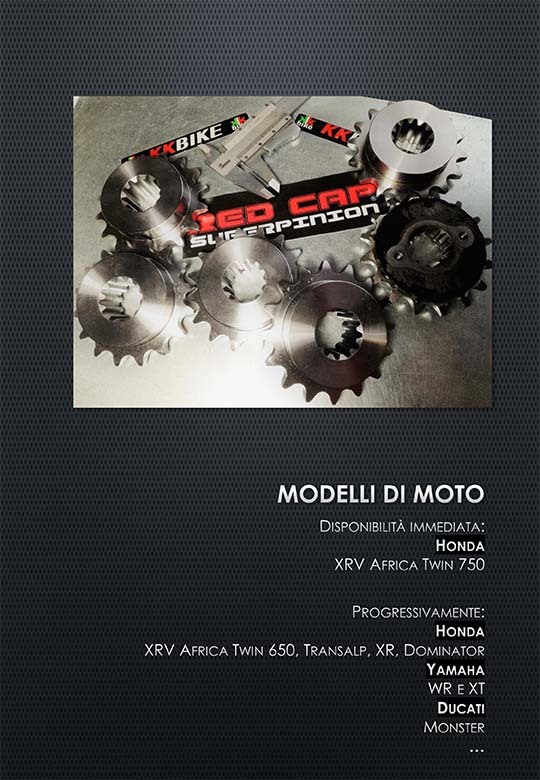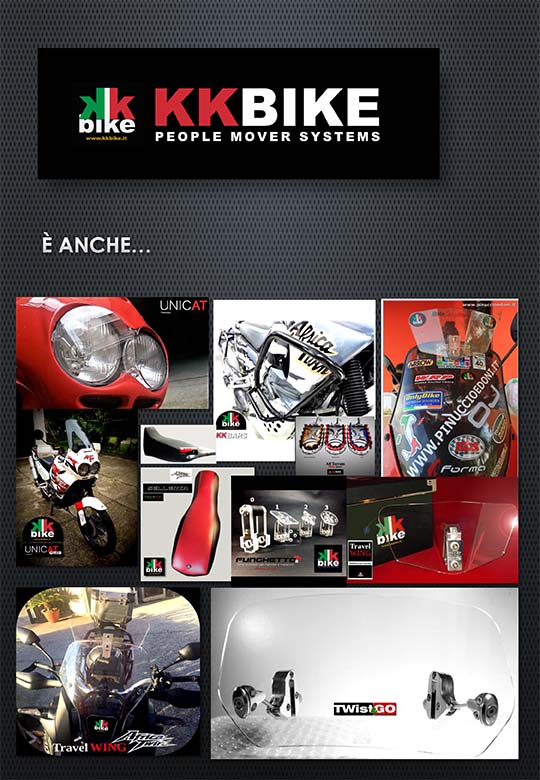THE KKBIKE PINION
It is a reinforced motorbike pinion that can be mounted on the drive shaft of the gearbox. The technical problem analysed concerns the secondary transmission of vehicles that use chain, crown sprockets, and pinion gears to transmit movement from the drive shaft to the wheel, via a secondary countershaft. A crown sprocket and pinion system is a chain or gear transmission system, where the pinion is the smallest gear and the crown sprocket is the largest gear.
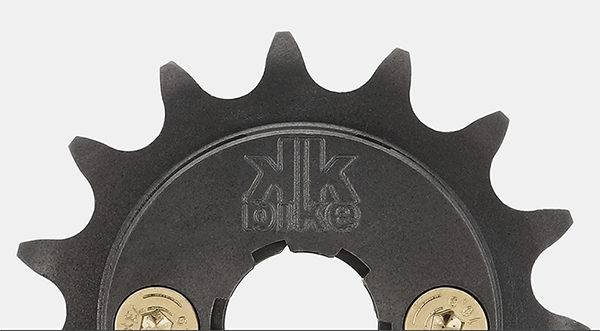
SUPERPINION
TECHNICAL DATA SHEET AND DRAWING CHARTS
A pinion is a toothed wheel whose teeth are designed to join a drive chain, belt or other perforated or profiled elements to another sprocket.
In the case of motorbikes, the pinion refers to the output shaft of the gearbox, be it a gear or continuously variable transmission type, which is connected to the rear crown sprocket via a chain (but a toothed belt can also be used).
The pinion has a central toothed cavity that meshes with the central part of the transmission shaft.
The shaft is provided with a groove at the end, followed by a second groove for the insertion of a locking plate with teeth that are offset compared to the pinion teeth, which is inserted in the initial part and rotated within the groove and fixed to the pinion by means of screws, preventing the slipping out of the shaft itself.
The technical problem analysed concerns precisely the wearing of the splined secondary shaft.
Very often, in fact, it occurs that the gearing of the spline shaft gradually becomes worn by the teething of the pinion, which, slowly, due to the continuous vibrations and friction, affects and wears it down to the point of nulling it, sometimes completely interrupting transmission and thus rendering the vehicle inoperable.
The progressive and inexorable wear and tear render the motorbike unusable and the cost of replacing the drive shaft is very often such that it is not considered worthwhile.
Many motorbikes have been wrecked due to the lack of an adequate solution, and these have often been motorbikes of historical and collectors' interest of a certain value.
In order to solve the aforementioned problem, KKBIKE International srls has designed and manufactured a reinforced motorbike pinion that can be mounted on the drive shaft of the gearbox, consisting of:
A central pinion (3), equipped with circumferentially arranged threaded holes (12), provided at the front with an extrusion (14) having on the sides (in correspondence of the lateral surface) through grooves (2), and having a through-hollow (4) provided with circumferentially placed gripping teeth (8) which mesh with the central part (16), with the front end part (18) and the rear part (15) of the output of a splined secondary shaft (1) of the gearbox' shaft on a motorbike (19) - Chart 1 Fig. 1, Chart 2 Fig. 2, Chart 3 Fig. 3; half-moon-shaped plates (13), each with through-holes (9) which fit into the through-holes (2) of the circular extrusion (14) of the central pinion (3), until they engage with the inner edge (10) of the half-moon shape, each exiting from the inner side (5) of the through-holes (2), inside the mounting groove (17) of the milling gear shaft outlet (1) and with the upper lateral edge (11) of the half-moon shape, in contact with the upper internal edge (7) of the through-hollow (2) preventing the central pinion (3) from coming out of the milling gear shaft (1) of the motorbike's gearbox shaft (19) - Chart 1 Fig. 1, Chart 4 Fig. 4; a number of screws (6) inserted into the holes (12) of the central pinion (3), passing through the through-holes (9) of the half-moon shaped plates (13) which keep all the elements compact with each other - Chart 1 Fig. 1, Chart 3 Fig. 3.
The pinion so conceived exploits all the useful toothing of the end part of the shaft, thereby rendering the coupling more solid than a normal pinion, which only grips the toothing of the central part (16) of the splined secondary shaft (1) by means of very few components.
The central pinion (3) can also be fitted to a splined secondary shaft (1) in which the central gripping teeth (17) are worn or missing, transmitting torque to the motorbike's drive shaft (19) by gripping the rear (15) and front (18) teeth of the splined secondary shaft (1) itself, without the latter having to be replaced.
The central pinion (3) is made of a material that is less hard than the pinion shaft (1) so that any tugging does not wear (the more expensive to replace) pinion shaft (1) but does wear the central pinion (3) - Chart 1 Fig. 1, Chart 3 Fig. 3.
Further features and advantages of the Invention will be made evident by reading the following description, of a form of realization of the invention, provided by means of the illustrated attached drawings and charts, by way of non-limiting example. Anyone skilled in the art will thus be able to better understand the invention.
Brand evolution



Registered trademarks and patented models.
All rights are reserved to KKBIKE International s.r.l.s. Via Acquasanta, 31 – Zona Ind.le 84131 Salerno (Italy) - Ph: +39 320 815.95.62 web: www.kkbiker.it - email: info@kkbiker.it - pec: kkbikeinternational@pec.it P.IVA 05502640658 - CCIAA SA 450903
SPLINE SHAFT WEAR TEST
Premise
For years we have been discussing the problem of the secondary gear shaft, known as the 'spline shaft', which over time experiences wearing problems due to friction with the pinion gear it is fitted with, leading to conditions such as those in the photo above. In this article we mainly refer to the Honda Africa Twin and Transalp motorbikes, but the problem is also known to affect other bikes of other brands.
Replacing a worn 'secondary gear shaft' requires such an investment that it is sometimes cheaper to replace the engine with a newer one. But over the years the chances of finding a newer engine are disappearing and you run the risk of finding an engine with a new shaft but worse problems.
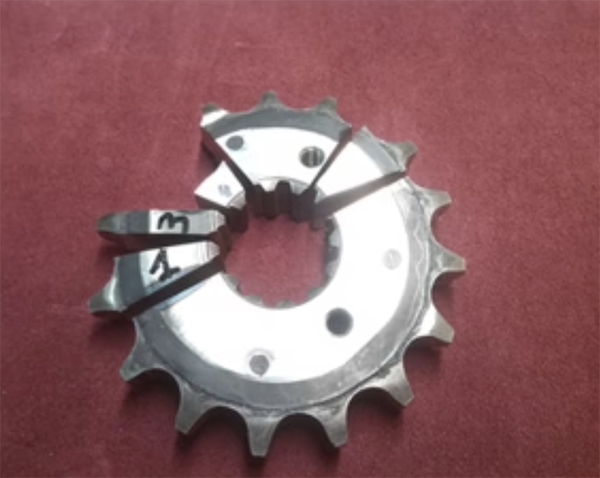
HYPOTHESIS 1
Many have argued and hypothesised about the causes of this wear and tear, we have also tried, but with a slightly more technical approach.
The hypothesis that most consider being plausible is that there is a strong difference in hardness between the materials of the frictional components, and their surface treatments: pinion and shaft. The results of tests carried out on a single shaft and pinion of a HONDA XRV 750 Africa Twin.
Test Results
For this reason, we took an original pinion gear and a shaft taken from a motorbike to a specialist workshop for replacement.
They were both sectioned according to the logic of the points that come into friction because they have a higher average surface treatment. The intermediate points were also measured, to get an overall idea of the treatments carried out.
HR15N is a measurement on the Rockwell scale. Those who want to know more about the type of tests carried out can read the Wikipedia explanation, while those who want to have fun converting this measurement into another one they are more familiar with, can do so by using this converter.
These are the results:
PINION - HARDNESS LOG HR15
OVERALL: PINION GEAR HONDA XRV 750 AFRICA TWIN MOTORBIKE
The part was suitably sectioned for the correct hardness measurement on the surface and internal points of interest.
SECTION 1: Unreported measurements due to detection problems
SECTION 2: Tooth hardness measurements in grip on the splined shaft
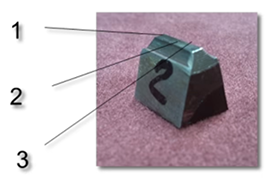
1. 87 2. 85 3. 84
SECTION 3: Internal hardness measurements (raw material)
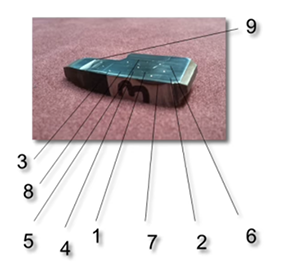
1. 73 2. 71 3. 77 4. 78 5. 76 6. 74 7. 72 8. 78 9. 84 (lateral)
SECTION 4: Side chain tooth hardness measurement, in grip during release
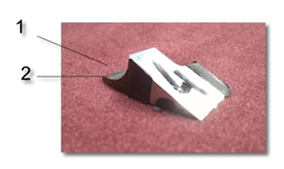
1. 87 2. 88
SHAFT - HARDNESS LOG HR15
OVERALL: SPLINE SHAFT FOR PINION GEAR SETTING (SO-CALLED "MILLERIGHE") HONDA XRV 750 AFRICA TWIN
The component was suitably sectioned for the correct measurement of hardness at the surface points of interest on the face of the shaft and its gripping teeth.
SECTION 1: Surface hardness measurements of face and spline shaft tooth
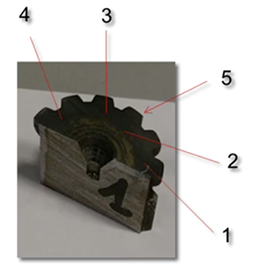
1. 92 2. 91 3. 90 4. 92 5. 84
SECTION 2: Surface hardness measurements of face and spline shaft tooth
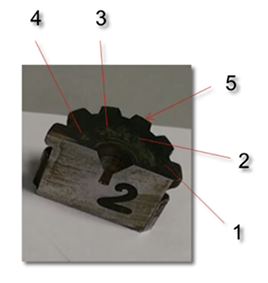
1. 87 2. 92 3. 92 4. 92 5. 85
CONSIDERATIONS OF HYPOTHESIS 1
It is clearly obvious that our test shows its limitations given the small number of samples measured. But, confronting ourselves with other engineers who have already ventured into tests such as these, we came to the same conclusions. The hardness of the shaft is higher than the hardness of the pinion. This causes hypothesis 1 to fail unless there have been batches manufactured over the years by different suppliers who have adopted different types of treatment. However, in the numerous feedbacks, we have received from our customers, we have not been able to trace any consistency between this logic and reality. The statistics we have empirically recorded concerning abnormally worn shafts are incompatible with this hypothesis and do not show any concentrations, neither by model nor by year, except for a few vintages of certain Transalp models for which we have found a higher frequency of faults. But this is a statement that we ourselves assess with caution, given the type of analysis performed.
HYPOTHESIS 2
There is a widespread belief that the manufacturer deliberately created an axial and radial interplay between the pinion and the shaft in order to provide greater elasticity in chain movement, especially for off-road use.
Test Feedbacks
We purchased new shafts and pinions in 2016 and paired them as required. It was immediately evident, given the resistance offered by the pinion's engagement manoeuvrer on the shaft, which also required us to use a bakelite hammer, that the clearance was not within the manufacturer's design intentions. To further verify this, we also tested it with a light spot on the back, to check if there were any gaps due to tolerances. No light ray passed through the gaps between the shaft and pinion teeth.
Although conclusive, we do not consider this test exhaustive because the parts we purchased were of the latest generation and may have undergone modifications over the years in an attempt to rectify the problem. At the same time, however, this reiterates the manufacturer's desire not to allow clearance between the moving parts, which, instead, must turn solidly and without friction between them.
With this second test, we believe we have busted another myth!
FURTHER HYPOTHESES AND CONSIDERATIONS
We believe that there may be a set of concurrent causes that may lead, all together or only in part, to the anomaly under investigation. These include:
- MAINTENANCE MANAGEMENT THAT DOES NOT COMPLY WITH THE REQUIRED STANDARDS. All too often, the simplicity that characterizes the maintenance of these vehicles leads, even, those who have no specific skills, to try their luck. They unknowingly end up causing damages for which they have no explanation. Some examples: - an overtightened chain pull that causes the pinion to work eccentrically compared to the shaft and generates friction that, in time, begins to erode the surface finishes of the parts in contact. - the non-frequent replacement of the locking plate which, over time, is exposed to tooth wear that causes the pinion to develop axial clearance. This generates friction that is greater than expected. - We also consider the lack of cleaning (sometimes done only superficially), of the area in which the above-mentioned parts operate, which, as time goes by, leads to the penetration of particles between the friction parts, thus generating greater ones.
- USE OF THE MOTORBIKES FOR PURPOSES BEYOND THEIR ACTUAL CAPACITIES – use of the motorbikes in challenging off-road sessions, which are possible thanks to their performances, is definitely not making life easy for the parts involved.
CONCLUSIONS
As a result of our experiences, tests, and considerations we are led to believe that the capabilities of these vehicles were not duly assessed during the engineering phase. However, this has still given them enough popularity because they have gone beyond the functional expectations for which they were manufactured. Still, it has also highlighted several limitations in the use of materials used in the manufacturing of parts that, over the years, have proved to be fatal for users who have come to own vehicles that have already been exploited beyond their actual capabilities and/or that they have improperly misused them. These series of causes (with the currently available data in our hands), cannot indicate which the main one is but have given as a result that certain conceptual limitations have become the Achilles' heel. We support this consideration by contrasting this hypothesis with the knowledge that other motorbikes, made with the specific intention of much more intense and wearing use, have, despite everything, withstood the test of time and have not shown any signs of abnormal wear of pinions and shafts.
All myths have their fantasy side and their real side.
If we give an easygoing look at how much satisfaction they have given their owners, we cannot however avoid considering that these same exceptional performances have generated the worst nightmares for those who have suffered the meltdown of a dream that only a great passion can create.


